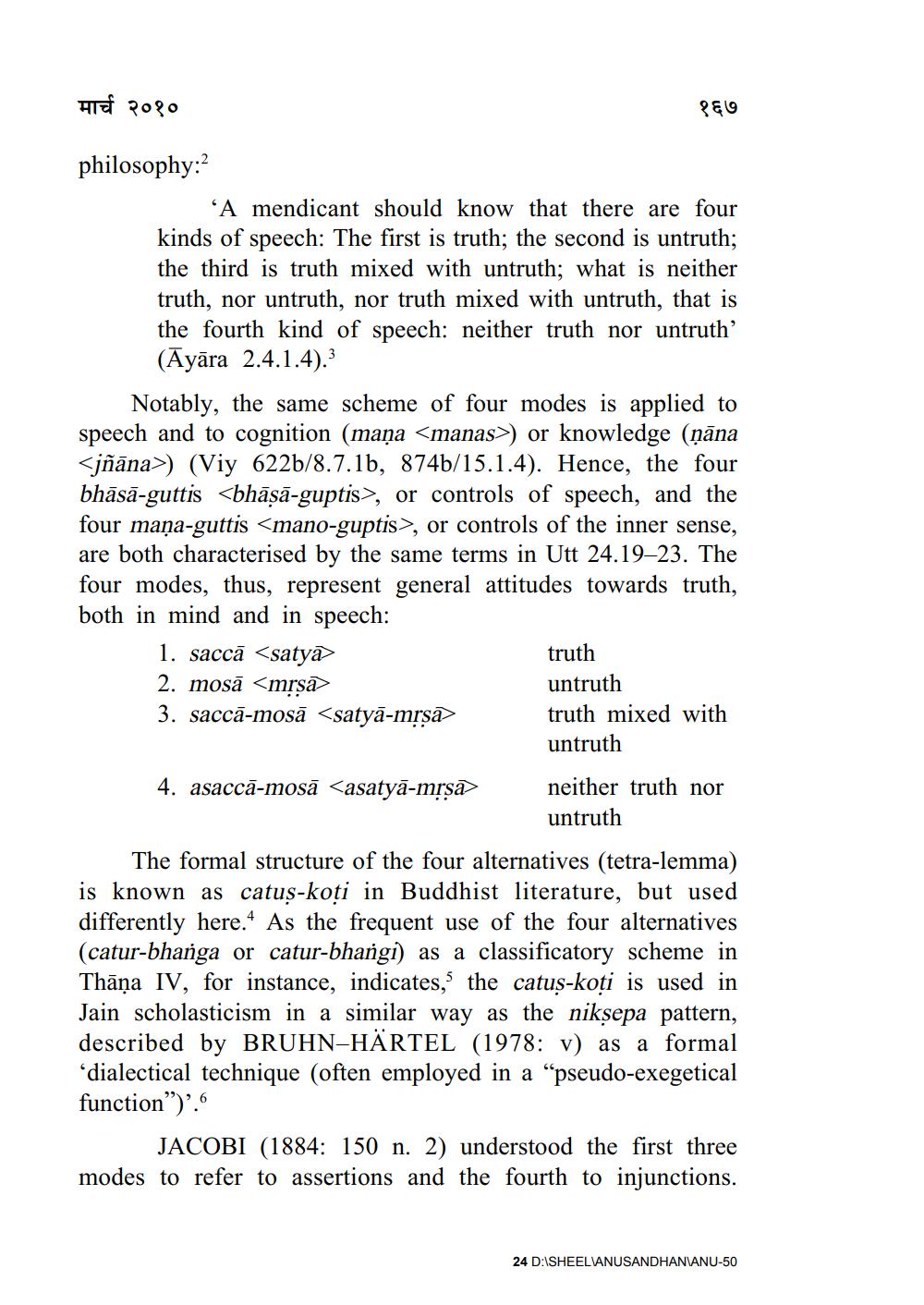Book Title: Truthfullness and Truth in Jaina Philosophy Author(s): Peter Flugel Publisher: ZZ_Anusandhan View full book textPage 2
________________ मार्च २०१० philosophy:2 'A mendicant should know that there are four kinds of speech: The first is truth; the second is untruth; the third is truth mixed with untruth; what is neither truth, nor untruth, nor truth mixed with untruth, that is the fourth kind of speech: neither truth nor untruth' (Ayāra 2.4.1.4).3 १६७ Notably, the same scheme of four modes is applied to speech and to cognition (mana <manas>) or knowledge (ṇāna <jñāna>) (Viy 622b/8.7.1b, 874b/15.1.4). Hence, the four bhāsā-guttis <bhāṣā-guptis>, or controls of speech, and the four maṇa-guttis <mano-guptis>, or controls of the inner sense, are both characterised by the same terms in Utt 24.19-23. The four modes, thus, represent general attitudes towards truth, both in mind and in speech: 1. sacca <satya 2. mosā <mrsa 3. sacca-mosā <satyā-mṛṣā 4. asacca-mosa <asatya-mṛsa truth untruth truth mixed with untruth neither truth nor untruth The formal structure of the four alternatives (tetra-lemma) is known as catus-koți in Buddhist literature, but used differently here. As the frequent use of the four alternatives (catur-bhanga or catur-bhangi) as a classificatory scheme in Thāṇa IV, for instance, indicates, the catus-koti is used in Jain scholasticism in a similar way as the nikṣepa pattern, described by BRUHN-HÄRTEL (1978: v) as a formal 'dialectical technique (often employed in a "pseudo-exegetical function")"." JACOBI (1884: 150 n. 2) understood the first three modes to refer to assertions and the fourth to injunctions. 24 D:\SHEELVANUSANDHANIANU-50Page Navigation
1 2 3 4 5 6 7 8 9 10 11 12 13 14 15 16 17 18 19 20 21 22 ... 53
